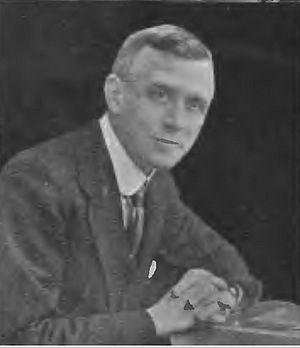John Stephenson (zoologist) facts for kids
John Stephenson (born February 6, 1871, died February 2, 1933) was an important surgeon and zoologist. He was born in Padiham, Lancashire, England, and passed away in London. He became a top expert on earthworms found in India and nearby countries.
From 1927, he was the editor of the Fauna of British India book series, which describes animals from that region. John Stephenson also knew several languages like Persian, Hindustani, and some Arabic. This made him a scholar who translated many old Persian writings into English.
Contents
Stephenson's Early Life and Career
John Stephenson studied at Burnley Grammar School before going to Owen's College, Manchester. He earned his science degree (B.Sc.) in 1890 and his medical degrees (M.B., B.Chir.) in 1893. He also studied zoology, which is the study of animals.
After finishing his studies, Stephenson worked as a doctor at the Manchester Royal Infirmary and the Royal Chest Hospital in London. In 1895, he joined the Indian Medical Service as a lieutenant. This service provided medical care for the British army and people in India.
Military and Medical Duties in India
Stephenson spent several years working in the military in India. He served with the Tirah Expeditionary Force in 1897–98, which was a military operation. For his service, he received a special medal.
He also helped with efforts to control the plague, a serious disease, during that time. From 1900 to 1906, he worked as a civil surgeon in different cities in north-west India, including Peshawar and Ambala.
Becoming a Fellow and Professor
In 1905, John Stephenson became a Fellow of the Royal College of Surgeons in London. This is a special honour for surgeons. In 1909, he received an honorary doctorate (DSc) from the University of London, recognizing his important work.
In 1906, he was invited to teach biology at the Government College in Lahore, India. He later became a professor of zoology and the principal (head) of the college in 1912. He held these important positions until he left India in 1920 to return to Britain.
Later Academic Work and Honours
In 1912, Stephenson was chosen as a Fellow of the Royal Society of Edinburgh, a famous scientific group in Scotland. He received the Society's Keith Medal for his scientific achievements between 1917 and 1919. In 1919, he was also made a Commander of the Order of the Indian Empire (CIE), another high honour.
From 1920 to 1929, he taught zoology at the University of Edinburgh. He continued his language studies, becoming skilled in Hindustani, Persian, and later Pashtu and Punjabi. He also knew some Arabic. In 1910, he translated an important work called Hadiqat al Haqiqa by the Sufi poet Sanā'i from Persian into English.
In 1929, he moved to the Natural History Museum, London. There, he became the editor of the Fauna of British India series, continuing his work on describing the animals of the region.
Stephenson's Family Life
In 1895, John Stephenson married Gertrude Bayne. She lived longer than him. They did not have any children.
Awards and Special Honours
John Stephenson received several important awards and honours for his contributions to science and medicine:
- 1912 — Fellow of the Royal Society of Edinburgh
- 1919 — Commander of the Order of the Indian Empire
- 1930 — Fellow of the Royal Society of London
In 1914, a botanist named S.R. Kashyap named a new group of plants, a genus of liverworts, after him. This plant is called Stephensoniella.


